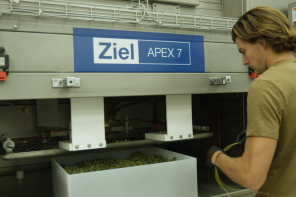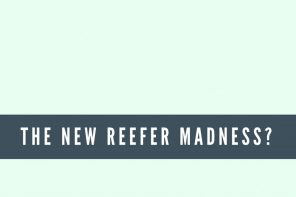Cannabis Reports Provides Comprehensive Tools For Cannabis Businesses
At first glance, Cannabis Reports would appear to be yet another web-based, cannabis consumer platform for reviewing and sharing information about different cannabis strains. However, upon talking with CEO and Founder David Drake, it becomes clear that Cannabis Reports, and their industry leading API, offers a supreme peek behind the cannabis curtain to both businesses and consumers alike. On the business side, Cannabis Reports provides dispensaries with a number of invaluable tools that will improve product listings, pricing and market competition. On the production side, businesses can see what products are being sold at what price, with what THC percentage, and so on, so that they can choose to compete or fill an entirely different niche. Lastly, consumers can research and review strains, as well as search for different purchasing locations.
To sum up, Cannabis Reports, based out of the technology hub of America, the San Francisco Bay Area, is providing local businesses and consumers with a platform that is above and beyond most others in the space. But how does the site work and why are they doing it? I recently had the chance to talk with CEO David Drake, who walked me through a screen-share tour of all aspects that Cannabis Reports has to offer.
What’s the aim of Cannabis Reports?
DD: Our aim is to improve the relationship between people and cannabis through education, outreach and technology. I graduated with a software and theatre degree, and I was a teacher for many years before getting involved in the cannabis space. I believe that, by providing quality information to people, they will be able to support a very open cannabis future for everybody.
We are the first to put all this information together as comprehensively and as functionally as we have.
How did you go from teaching to cannabis?
DD: In 2006, I left a teaching job on the east coast to head out to San Francisco. On the way out, I picked up a job doing some programming in Montana and that is when I really got involved with the politics of cannabis. Soon after, I started Cannabis Reports so that we could trace the cannabis genetics all the way back to its origin. We realized we could figure out the landraces and seed companies these strains were coming from and that, by doing so, the platform would become a great source of information for both businesses and consumers. The site and the idea for Cannabis Reports has come a long way from where it first started, as I’ve relocated to San Francisco and the site has grown immensely.
Whats The API?
DD: One of the biggest challenges when building software for cannabis is that it’s a very diverse industry with not a lot of definition or precedence. Sure there are other companies in the space who are offering information, in pieces, that is similar to what we do. However, we are the first to put all this information together as comprehensively and as functionally as we have. In addition to our API, which is being updated every day, we came up with a universal cannabis product code and have over 17,000 organized strains, seed companies, extract companies, chocolate companies and other product companies.. Businesses are building apps on top of this technology and using it to do research.
Our tracking goes all the way back to the countries that the strains come from.
How Does SR Work For Consumers?
DD: We did all the genetics work for all the strains, when you pull up a strain like Jack Herer, you see the seed company it comes from and the various strains that make up the parents. Our tracking goes all the way back to the countries that the strains come from. We ran the genetics as far back as we could for these strains, so users can know exactly what strains combined to form the strain they have now.
With this data and with all of this information, as you start to fill out reviews for strains, we start to build a personal profile for you. When you fill out a review, you fill it out for euphoria, appetite gain, creativity, calming, pain relief, and then anxiety. With our genetics information, we take your feedback and build a profile as to how individual strains impact you.
For example, in my profile you can see an Afghani Landrace, Colombian Landrace and Acapulco Gold. Even though I’ve never actually tried these before, I’ve experienced the genetics a number of times in other strains. We can start to make assumptions about how those will make you feel based on responses to related, or unrelated, strains. If you are searching for pain relief, Cannabis Reports can use your feedback to refresh you as to strains you have used before that may have worked, or even suggest different strains that contain the same genetics. You can even search by country of origin. This whole process really gets us back to talking about cannabis on a more interesting level.
How About Producers?
DD: In addition to being a resource for the average cannabis consumer, Cannabis Reports offers an in depth business platform where we provide plans for producers and dispensaries. You can sign up as a cultivator, chocolate maker, extract maker, delivery service or dispensary business for example. We have a different set of tools designed specifically for whatever side of the business your company is operating in.
Let’s take a company that makes cannabis chocolates for example. Of course they offer a customizable inventory platform, where businesses can track sales and trends. Cannabis Reports takes it further than that though. Businesses are encouraged to upload their lab testing, providing more transparency to the consumer side. Perhaps most important, SR uses a unique identifier called a universal cannabis product code(UCPC), so that businesses can get accurate, up to the minute data and market research.
Easy For Producers
This system tells businesses how well this particular chocolate bar is selling and what the different price points are. Businesses get all this information about their individual items so they can learn what their market looks like and how well their individual items are performing.
Additionally, businesses also get QR codes that they can add to their labeling. Consumers can scan this QR code with their phone and it’ll take you directly to the product’s website, where you can find product information, photos, add a review, find more locations where the product is for sale or get a lab test result. They also get bar codes that they can use for inventory purposes and for tracking purposes. These are all very powerful tools for businesses to have.
And Dispensaries?
DD: Dispensaries get the most data and a couple more powerful tools. They of course get their normal, feature pages where they have the menu listing and reviews. Their menus are set up and live managed by the businesses themselves, providing for real time inventory and product updates. The interface that dispensaries can use to manage their menu and add new products is fantastic. All the outside product information is preloaded, so as soon as you start typing in a name, your products come up. You can then add the product and set it at your price point. The platform pulls in all the other information about that product with no further need from the dispensary.
If businesses want to know the market data of Chiesel as a strain, they’ve got it. If they want to add a new edible to their system and they don’t know how to price it, they can hop in and see, “What are the prices around me?” And be able to determine what their prices should be. Additionally, it’s super easy for them to add stuff new products. If they want to add Kiva products, they type it in and we already have all the photos and descriptions loaded up. It’s just a couple clicks away.
Valuable For Dispensaries
Market Data
DD: Another great tool that Cannabis Reports has worked into the backend of its system is comparative market data. Businesses can see how they’re performing compared to other locations around them as well as the market as a whole. Then, they can look for new and exciting products in the area, which locations are selling them and exactly how much they should be paying for that product.
If your chocolate company wanted to come out with a new chocolate, they can look at the area and see price per milligram of chocolates right now. Our data might show that nobody has a 150 or 300 mg chocolate out, so that could be a good gap to fill. Additionally, producers get a list of all the dispensaries around them, so they can have their sales team expand their product availability. Plus, once a dispensary picks up your product, the producers can actually add themselves to dispensaries.
With our genetics information, we take your feedback and build a profile as to how individual strains impact you.
As they start to grow and enter new locations, they don’t have to wait for the dispensary to go update their menu. They can just say, “We’re available here now.” Then they can add the availability and their items to that menu so that that information is up to date. This is a great way for producers to really legitimize themselves and get their lab tests and information out to the public. It’s very inexpensive and we don’t sneak in add-ons. It’s all there for a low monthly cost.
They get this information for edibles, extracts, product, everything. The dispensaries get a whole bunch of really cool data, and then they can get all of their information out through our API. Our API is completely documented so we have 17,000 products, strains and extracts. This is available for them to build on so they can get all of their data out. They can use this platform to power their website and their internal menu.
This is a great way for producers to really legitimize themselves and get their lab tests and information out to the public.
UCPC
DD: Perhaps the most valuable tool to this process is the access to the universal cannabis product code. One the main challenges we faced was how to organize all this data that we were collecting. We worked with producers to come up with a 25-digit code. In it we encoded the location that the strain came from, the strain itself, company who made it, product name and then the batch number. We have the ability to track batches of product so that people can upload new lab tests or new product information.
You really get to track where the actual product came from and get a usable code to use, which is great for consumer safety, if you need to do a recall, you can actually identify it by batch number or by company or by product. This system is currently being adopted by a number of different businesses and we are in talks with a number of different states that are interested in our tracking platform.
For more video information, visit here. What do you think is the best application of a technology like Cannabis Reports? Join the conversation and comment below!










